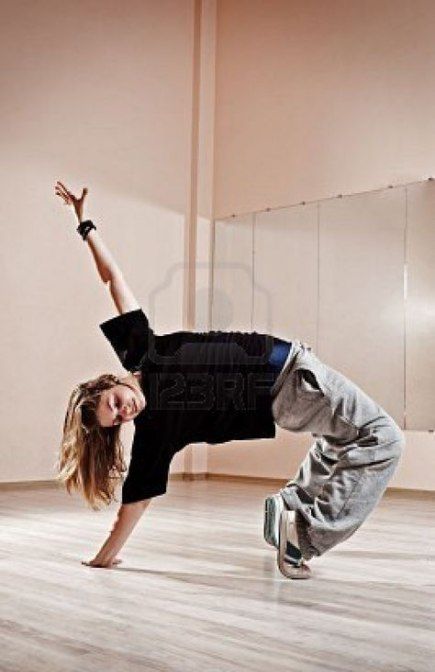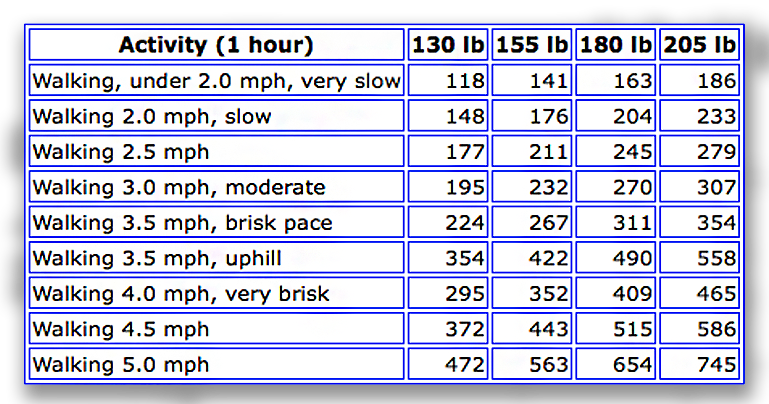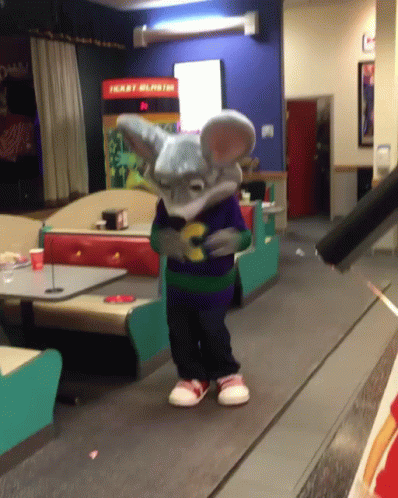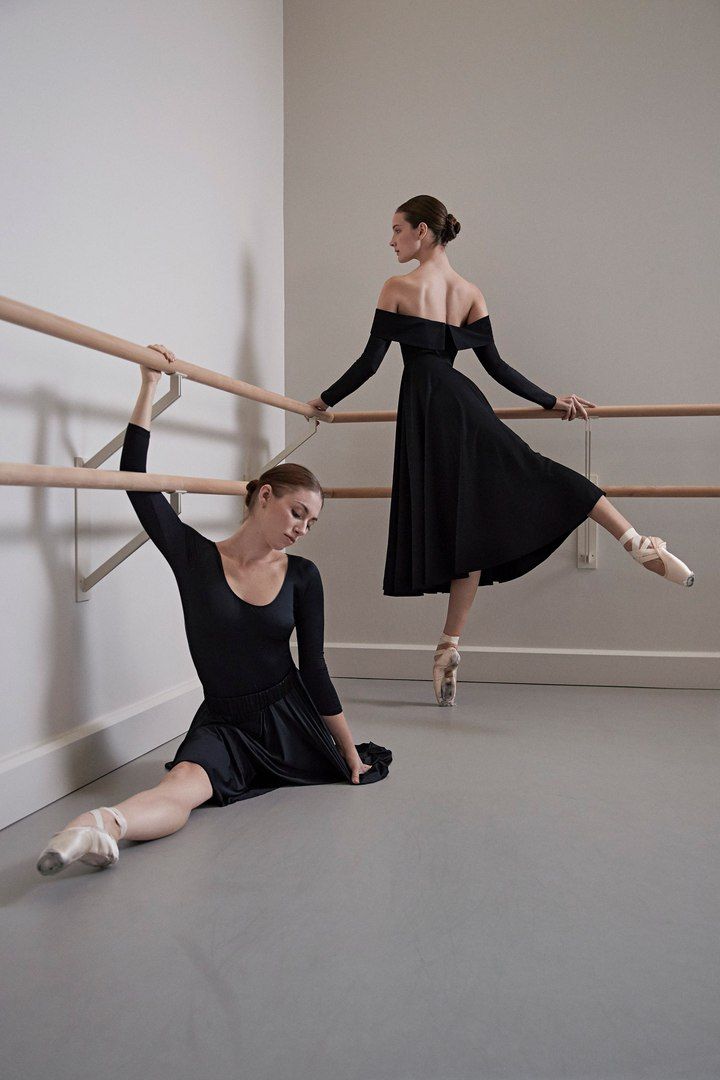How to do an axle in dance
Jazz Dance Terminology A-Z
Ad Lib: Means to “improvise”. This term was coined by jazz musicians.
Axel Turn: An axle turn is basically two turns in one. It starts with a chainé turn then without stopping one leg goes to passé position and the other joins it in a jump before landing. The arms pull in for the chainé - then for the axel jump one stays in first position front while the other opens to second then circles above your head and down.
Ball Change: This is a change of weight between both feet. Change weight and do a stamp-stamp.
Barrel Jump: Basically a jump in the air with both legs bent back from the knee and both arms in the air in any basic pose.
Barrel turn: A turn with your arms straight out but one is higher then the other and as you turn the arms switch heights. The arms can stay opened or closed during the actual turning action. The body stays bent forward and the dancer spots the floor or to the front.
Bounce: Basically a swing type step or bounce to a step.
Cake Walk: A type of diagonal walk with each step the foot raises as far up as to the knee – like an obnoxious type of exaggerated walk almost with an arched back. This was developed in the old days back when slavery was still happening and the black entertainers would do this walk to imitate the white high society as a parody. So it was a comical satire that turned into a dance step!
Cat Walk: A type of walk where one leg smoothly crosses over the other in a tango like fashion or a “cat like” way with the other foot bending back from the knee and the other extends forward.
Catch Step: This is a flat footed ball change.
Chassè: A basic ballet move that is used in all styles. A chasse is a kind of gallop where one foot chasses the other. It is a traveling step.
Coffee Grinder: This is a turning step that starts with a pirouette fouetté jump and one leg is bent while the other is in 2nd position. So do the fouette and a little jump while in mid turn. Others say this movement is closer to the ground while the body squats and one leg is bent and positioned unfer the working leg. Then the straight, free leg does a floor circle around your body and the supporting leg hops over the working leg as it is going – which describes more of a Russian move that a breakdancing move is now derived from. Both types of movement are basically called the same thing but the former is a more typical jazz mvoement.
So do the fouette and a little jump while in mid turn. Others say this movement is closer to the ground while the body squats and one leg is bent and positioned unfer the working leg. Then the straight, free leg does a floor circle around your body and the supporting leg hops over the working leg as it is going – which describes more of a Russian move that a breakdancing move is now derived from. Both types of movement are basically called the same thing but the former is a more typical jazz mvoement.
Contract: A basic modern movement used in all styles. This is where the dancer contracts the mid section and pull back against a movement for emphasis.
Curve or “arch”: This is the opposite of a contraction. The mid section pushes forward and the back arches curving the back.
Dolphin: This is a movement where the body flows in a snake type movement starting from the chest moving up. Shakira does this a lot! By the way, this movement is named several different things! We can call it the “s” move, the snake etc etc. .
.
Drop and Recover: This is more of a modern dance step but can be used in jazz as well. It’s when a dancer has to drop to the floor in a controlled fall from a position.
Fall: A way for the dancer to fall to the ground in a graceful and controlled movement that appears natural.
Fall Over the Log: A step where the dancer steps out onto one foot while the other foot lifts and points at the knee of the other. In ballet terms it would be considered a “piquè passé”.
Fan Kick: This is a round about kick where the body stays aligned but the leg kicks high in a fan motion starting inward and around or vice versa.
Figure 8: This movement you will see in mambo or the like and belly dancing even: it is when the hips smoothly roll around in the trace of the figure eight.
Flick: A jazzy and sassy way of doing a développe enveloppé. Basically the working leg sneaks up the supporting leg and flicks out straight ahead.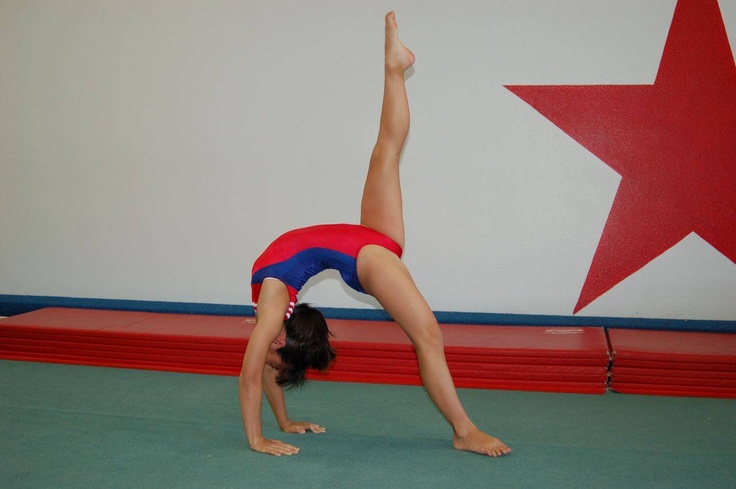
Flick Kick: Another ballet move done in a jazzy way which is basically a développé battement. This is when the working leg again sneaks up the supporting leg in a passé then jets out to a high kick in a flicking motion. This is a very “Fosse” like movement.
Freeze: Just what you think it means…to freeze a movement! This type of movement (or lack thereof) is more of an accent on music then a movement. It gives a moment flare and emphasis in a subtle way.
Funk: This is more of a energy then a specific movement that tells the dancer to get into the music and ride with it or grove with it in a loose and fun way. Funk is also a rhythm and a type of music.
Head-roll: Speaks for itself! A head roll is letting the head move around it’s entire circular access in a controlled but relaxed fashion while the body stays aligned and in position. Head and hand rolls where a very popular movement Bob Fosse used. He liked small rolling movements as in his choreography from “Cabaret”.
Hinge: This is when the body is aligned but it is being tipped from the knees down with the feet on the ball pushing it forward.
Hip Walk: A basic jazz walk that jets the hips out in a circular sexy movement with the arms rounded in back while in pliè.
Hip-fall: This is a controlled drop to the floor whether on knees or feet and a slide through till the body is on the floor on it’s side and one arm is straight out against the floor.
Hip-roll: This is an isolated roll of the hips while the rest of the body stays in position.
Hitch Kick: This is like the famous “Karate Kid” finale kick! You give a little jump up with one knee in the air, and as soon as you kit the ground the other leg whips into a high kick. The former move is a preparation for the high kick
Hop: This is a jump off of one foot that lands on the same foot. Like in hop scotch…
Jazz Drag: This is a jazz walk or hip walk with a drag in it.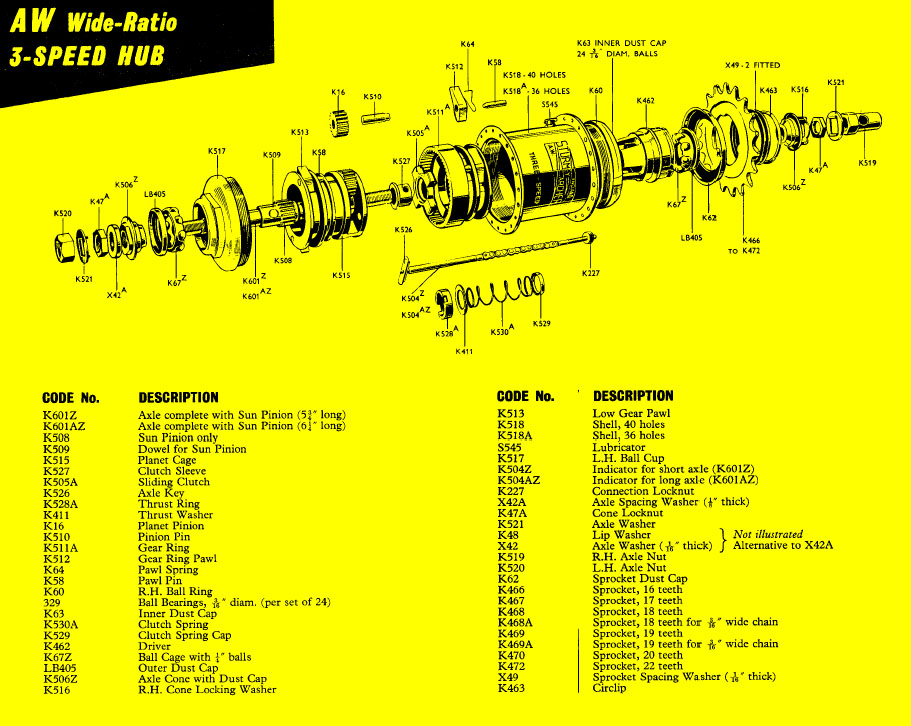 Sort of a dragging jazz walk.
Sort of a dragging jazz walk.
Jazz Run: A running jazz walk! This requires a fluidity and grace to make it look natural and not awkward.
Jazz Split: This is a split on the floor with the back leg bent upward from the knee. Sometimes the knee can be grabbed or the head can be arched back towards it.
Jazz Square: This is a smooth four step movement, example: step out on your right leg, step back with your left, cross over with your right leg and step forward with your left. A full square movement in a sassy jazzy motion.
Jazz Walk: A low gravity type of walk where the body is in pliè and the shoulders and arms are curved in opposition while walking forward. This is without a hip roll. The Hip walk is the same but with a hip roll.
Jump Over the Log: This is a jump from one leg to the other that is a little more grand but not big enough to make a flying leap. It’s a control leap from one leg to the other. In jazz a slick and catlike form must be kept for the movement to “gel”.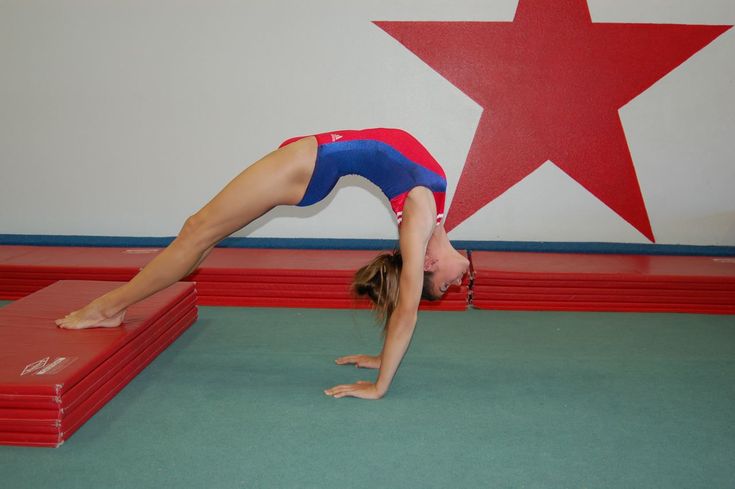
Kick: This is a high kick that throws the working leg in the air in a controlled manner, while the supporting leg and body stay properly aligned in the jazz
Lyrical: Smooth Sustained Movement
Lay Out: This is the jazz moves of all jazz moves. The layout is a difficult one to master for some. The body must be flexible to kick out and within’ the kick the body will lean into it with the leg still high, and the entire torso will follow it until it’s parallel with the floor and the arms follow behind (or above) it
Limbo: We’ve all done or seen the limbo! Basically walking in a hinge and sometimes adding a shimmie to the shoulders.
Mess Around: This is a static turn that starts with one leg that crosses over the other and brings the body around in a 360 degree two legged turn (in ballet it’s called a soutenu). The head sometimes roll as do the hips and the arms are straight out in opposition like an “airplane” move.
Moonwalk: Michael Jackson originated this one…
Pencil Turn: This is a spin on both feet where the body is straight and the body spins a few times with ease.
Pitch: Often the position is a deep arabesque with the playing leg up in the sky and the chest towards the floor hitting the standing led. It's a very dynamic movement often done after a pirouette (turn + pitch).
Pivot Step: This is a step forward (or in any direction) with a pivot right after.
Primitive Squat: This is a hop forward into a deep 2nd position (see ballet terms) pliè. But in jazz, you won’t be required to be turned out as much (whew)! This is to make the move more sassy then classical…as is jazz ;)
Release:The opposite of contract. A release is only done after the contraction. It is a “letting go” of whatever forced movement or pose your body was in.
Ripple: A snake movement which starts at the pelvis and works it’s way up to the torso and moves in either direction one after the other. The actual “snake” starts from the head though – this differs cause it starts (again) from the pelvis
Shimmie: This movement is done from the shoulders. One shoulder moves forward while the other moves back and is done really fast in a shake. This movement is also a type of “breast” shaking movement in burlesque dancing (just so you get the picture)!
This movement is also a type of “breast” shaking movement in burlesque dancing (just so you get the picture)!
Shiver: This is a controlled tremble throughout the entire body. The small muscles must contract and tighten so they twitch very quickly.
Shoulder Fall: This movement started from Martha Graham and her series of “controlled falls”. Basically the dancer arches back almost into a backbend but pushes the body out when it would otherwise backbend or hit the ground so the body slides back leaving you on the ground flat on your back.
Shoulder Roll: An isolation movement of the shoulders. A shoulder roll!
Sissonne Fall: A controlled side fall after doing a “sisonne” which is a sissor like kick out to the side where you push out on two feet while the body flies sideways and one leg kicks up higher then the other. Then after you fall out to the side in a controlled manner with one arm being out flat against the ground as your hip and one same side leg will be.
Skate: This is a skating movement like a speedway skater. The leg pushes in then pulls out side forward then the other leg does the same.
The leg pushes in then pulls out side forward then the other leg does the same.
Snake: Think “80s” – think “Paula Abdul” – the snake is an S movement starting from the head and curving the body sideways in a smooth and slinky movement all the way throughout the body and going to the other side in a seamless way.
Snap: A finger snap – like in West Side Story! Oh so jazzy…
Spins: Continuous moving turns (a.k.a. chainès).
Spiral: The spiral is a turn that turns the spine around in separate order. The top will be around faster then the bottom of your body or vice versa.
Stag Leap: This is a high leap or jump in a split but with the front leg bent from the knee inward.
Step: Step…need I say more?
Switch: This is a way to switch the working leg. Moving the working leg back so that the other leg is now free for the next movement.
Table top: 2nd parallel with a straight back tilting flat (like a table).
Tilt: High développé in a 2nd position with the body tilting to the opposite direction.
Touch: This is touching your pointed foot to the floor with a quiet energy.
Tripplettes: Diagonal walking at ¾ tempo (originated from Graham).
Turns: Turning on the beat.
Twists: Pivoting from one foot to the other.
Worm: Dolphin going backwards with steps or chassés.
The quadruple axel is the hardest figure skating jump
On February 10 Japanese figure skater Yuzuru Hanyu nearly hit the first quadruple axel in Olympic history during the men’s free skate program. It was an audacious goal, almost hubristic, and experts, athletes, and fans alike say that Hanyu’s attempt at the feat is a triumph in itself. He may not have achieved the leap, underrotating and falling during his routine, but he was heartrendingly close.
If anyone could have completed a quadruple axel at the Beijing 2022 Winter Olympics, it would have been Hanyu, says Sarah Ridge, a biomechanist at Brigham Young University. “The thing about him is that he’s built for this perfectly”—and has the skills and talent to match. Landing the quadruple axel in the future, she adds, is not out of the question for Hanyu.
Landing the quadruple axel in the future, she adds, is not out of the question for Hanyu.
A quadruple jump requires a grueling four full revolutions in the air. The axel, the only figure skating jump that involves taking off facing forward and then landing backward, elevates the challenge, demanding skaters tack on an additional half revolution to their mighty vault. According to The Washington Post, 2022 Olympics men’s figure skating gold medallist Nathan Chen mastered all the quadruple jumps except for the axel.
A sequence of complicated events needs to occur for a skater to complete any spinning jump on the ice. Before they take the leap, the contender creates rotational momentum while on solid ground, by extending the limbs and twisting the body like a preloaded spring. Then, they must propel into the air. (The higher they jump, the more time they spend aloft.) Once airborne, the skater snaps into a ramrod straight position, tucking the arms and legs into the center of the body and axis of rotation. This reduces the body’s moment of inertia, or resistance to spinning, and speeds up the rotation. Upon landing, they once again spread out their limbs to increase the moment of inertia and essentially halt rotation, all the while keeping balance on a razor-thin blade. It’s an astonishing amount of physical changes and decision making packed into a split second.
This reduces the body’s moment of inertia, or resistance to spinning, and speeds up the rotation. Upon landing, they once again spread out their limbs to increase the moment of inertia and essentially halt rotation, all the while keeping balance on a razor-thin blade. It’s an astonishing amount of physical changes and decision making packed into a split second.
The margin of error gets even smaller when an athlete tries to stitch more revolutions into a seamless stunt, says Deborah King, a biomechanist at Ithaca College. Given the limited air time, skaters need to reach their maximum rotational speed as soon as they leave the ice to finish their target revolutions. Once they’re at top speed, they must hold their body positions and whirl away for as long as possible, right up until the landing.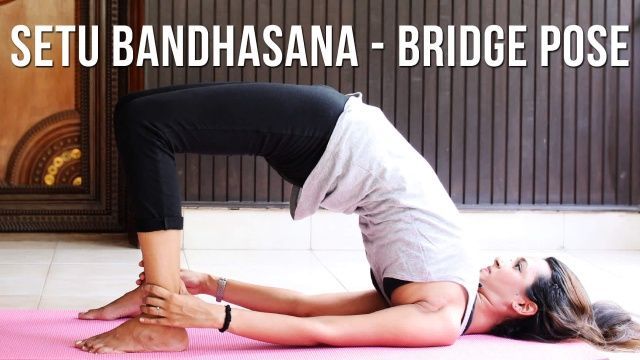
For now, no female or male figure skater has broken the upper limits of four spins, or a quadruple. That puts four-and-a-half revolutions, or a quadruple axel, tantalizingly within reach, says Ridge.
But is it possible to push beyond that number? The Olympics motto—faster, higher, stronger—adds another ideal when it comes to skating: lighter.
King says that the maximum number of rotations possible is limited by the figure skater’s moment of inertia, which in turn is dependent on body mass and shape. A slight constitution naturally gives them the advantage of a low rotational resistance. But no matter how much an athlete contracts and elongates their bodies during a jump, they can only squeeze as small as the width of their shoulders and hips, King explains. “If you watch a skater when they jump and you look at their position in the air while they’re doing quads, they’re already pretty much as small as they can get,” she says.
Another requirement is that figure skaters need to be strong, without the cost of increasing muscle mass. (Hanyu himself only weighs about 125 pounds and stands 5 foot 8 inches tall.) More strength translates to higher jumps and the ability to hold the body tightly while spinning in the air—an exhausting process despite how easy the pros make it look. The faster a skater spins, the more centrifugal force acts on their limbs, causing them to fling away from the body and out of the ideal rotational form. In some sequences, the twirler might feel a force of up to one-and-a-half times their body weight on their arms.
(Hanyu himself only weighs about 125 pounds and stands 5 foot 8 inches tall.) More strength translates to higher jumps and the ability to hold the body tightly while spinning in the air—an exhausting process despite how easy the pros make it look. The faster a skater spins, the more centrifugal force acts on their limbs, causing them to fling away from the body and out of the ideal rotational form. In some sequences, the twirler might feel a force of up to one-and-a-half times their body weight on their arms.
[Related: Figure skaters have to train themselves to ignore their natural reflexes]
Still, there’s only so fast an athlete can spin, and there’s only so high they can jump. “You can’t put all your effort into rotating; you can’t put all your effort into jumping. There’s a fine balance,” says King. Figure skaters typically hover in the air for about half a second, but hardly more than that, she says. With that math, she thinks five revolutions is probably the highest number of spins possible.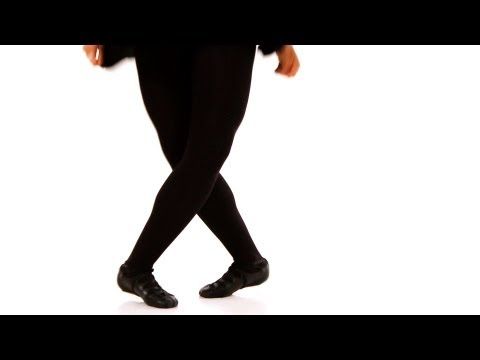 Six spins or higher is nearly unfathomable.
Six spins or higher is nearly unfathomable.
“I really cannot see that happening,” she says, “I would love to be proven wrong.”
Other experts agree that a quintuple jump might be the most spins that the sport can dream for. Ridge herself has measured the spinning rate of top American figure skating athletes. Even for those topping 2,000 degrees per second, the highest measurable range of Ridge’s instruments, she doesn’t expect anything higher than five revolutions in a single jump. “Maybe it is possible, and I just don’t have enough imagination,” she notes.
The only way the number would be beaten, Ridge says, is with a drastic revamp in ice skating equipment to allow athletes to better harness their motion for stunts. But given that skaters only have their boots and blades to work with, there’s not a lot of wiggle room to engineer a way into a more impressive feat.
View this post on Instagram
A post shared by Ilia Malinin (@quadg0d)
Mirai Nagasu, the first American female figure skater to land a triple axel at the Olympics back in 2018, also thinks a quintuple is within the realm of possibility.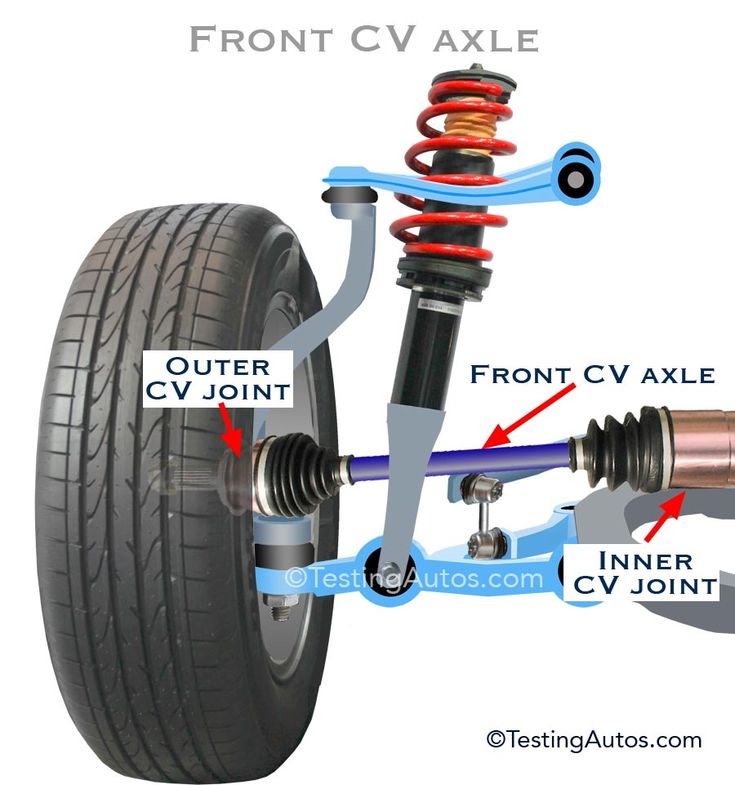 She says younger athletes like “quad god” Ilia Malinin will be inspired by the record-breaking achievements of current skaters to push the boundaries of the sport in the years to come. But landing new feats only counts if it can be done safely, she adds.
She says younger athletes like “quad god” Ilia Malinin will be inspired by the record-breaking achievements of current skaters to push the boundaries of the sport in the years to come. But landing new feats only counts if it can be done safely, she adds.
“We need more protection for these young athletes who are pushing their bodies because they want to win so badly,” Nagasu says. While learning the triple axel, she tore her lower labrum and had to undergo multiple hip surgeries. Breaking records in the sport may not be worth it, she says, if figure skaters exchange a heartbeat of glory for a lifetime of physical pain. As much as the public delights in thrilling new athletic displays, in the end, it takes Olympians many sacrifices to make the impossible possible.
Correction (February 14, 2022): The story previously stated that centripetal force causes a skater’s limbs to push away from their body as they spin. It should be centrifugal force.
BALANCE.
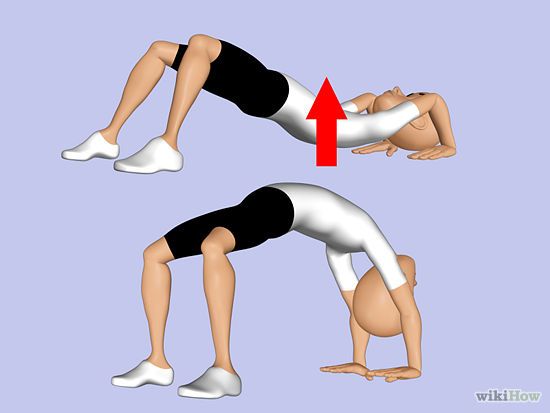 Part 1: Personal: zoukability — LiveJournal Author: Murasheva Nadezhda, Moscow
Part 1: Personal: zoukability — LiveJournal Author: Murasheva Nadezhda, Moscow Why is it difficult to stand on your feet in some cases? It happens that for some reason the body collapses, although the movement has long been worked out. And on rotations... The reasons for losing balance can be different, and I propose to understand them in detail and at the same time understand what can be done about it. This is the first article on balance, which is devoted to the general theory and personal balance of any person, regardless of gender and style of dance.
Balance is one of my favorite topics. All the time that I went to different classes, all I heard and knew about balance was "spread your legs wide" or "pull your abs and ass together." So I danced for a long time as a beginner who does not understand how it all really works, until ballet and modern jazz came into my life. And then my world began to turn upside down.
*There is a lot of nerdy information ahead*
I can imagine my evolution of ideas about balance as follows:
- Get into a stable position.
 The more difficult it is to maintain balance, the wider the legs. Partners who put their feet together on the work of the body - how the hell do they do it ?! It's so unstable.
The more difficult it is to maintain balance, the wider the legs. Partners who put their feet together on the work of the body - how the hell do they do it ?! It's so unstable. - Yes, I have a butt and abs, how useful they are!
- ...So that's what it means to keep your back! The feeling of self-importance jumped sharply, as if she had joined the secret knowledge.
- The true meaning of the cross at the feet is comprehended. Partners who put their legs wide - are they really comfortable?) 9&t, more feet.
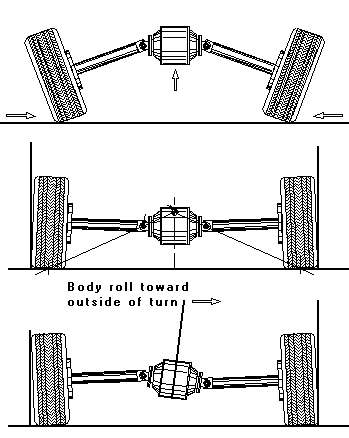 The phrase "turn on your back" would not have told me at that moment absolutely nothing.
The phrase "turn on your back" would not have told me at that moment absolutely nothing. With this article I want to help dancers who really need this information. Girls are more aware of the need to work on balance because of all the insane hell we're having in dancing. But all this is just as necessary for partners, since they need to keep themselves steady and be able to support their partner if necessary.
If you have strong training, then you have known all this for a long time, you know how and definitely cool;)
Let's start with pure theory. Having imagined it well, it will be easier for you to understand why you need what will be discussed later.
________________________________________
I. VERTICAL AXIS AND CENTER OF GRAVITY
Center of Gravity is the point on the ground where your maximum weight falls. It may not match the position of your feet.
Vertical axis - an imaginary vertical that comes out exactly from the center of gravity and is directed upwards (the so-called line of gravity).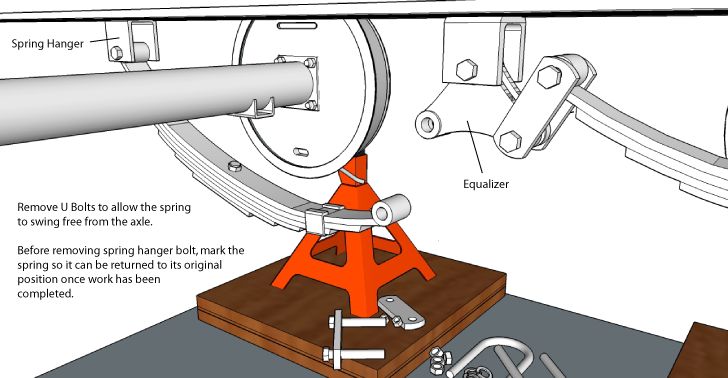
To feel your center of gravity shift, simply stand up straight with your feet parallel and slowly put more weight back into your heels, then forward into your toes, right and left. Along with the shift in the center of gravity, you deviate from the vertical axis. Now put one foot forward and the other back. Feel how the center of gravity can be in the middle of your feet, on the front or on the back foot, go to the right or left. This happens to you all the time in the dance, and the position of the center of gravity has a huge impact on your dance.
As long as the center of gravity does not go beyond the foot, you can keep your balance in this position. But if you give too much weight, and the center of gravity goes beyond the feet, then you will feel like you are falling over. In dance, this often happens for various reasons.
There are three ways to restore the overwhelmed balance in this position:
- Take a step in the right direction .
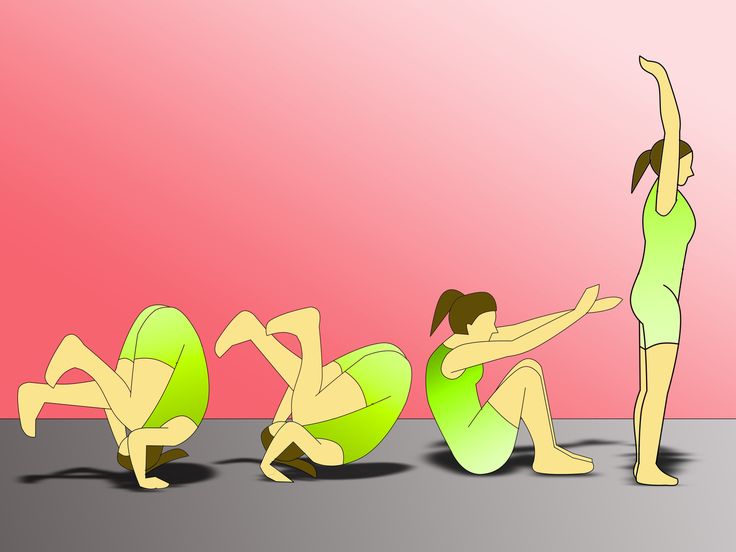 In this way, you shift your body so that the center of gravity is again under the feet, and the vertical axis again passes exactly through your entire body. You are catching up with the departed center of gravity. Within the framework of a paired social dance, this is the regulation of the length and direction of one's step. There are situations where this is exactly what is needed. We will talk about this in more detail later in the continuation of article "9.0046 BALANCE. Part 2: Balance in a pair ".
In this way, you shift your body so that the center of gravity is again under the feet, and the vertical axis again passes exactly through your entire body. You are catching up with the departed center of gravity. Within the framework of a paired social dance, this is the regulation of the length and direction of one's step. There are situations where this is exactly what is needed. We will talk about this in more detail later in the continuation of article "9.0046 BALANCE. Part 2: Balance in a pair ". - Strongly "pull" yourself up. The muscles of the back, abs and buttocks can pull yourself out of the blockage if the loss of balance is not critical. It takes some time to find the right muscles in yourself and learn
- Balance yourself The pelvis deviates to one side and the upper part of the body to the opposite. That is, the hips to the right - shoulders to the left, butt back - shoulders forward. This way you return the center of gravity under you, remaining in place, and symmetrically position your body on both sides of the vertical axis.
 This process occurs in the dance as consciously, when you clearly understand the mechanics of movement (deep cambrai ), and unconsciously, when your body itself tries to compensate for the lack of balance (not always correctly and beautifully).This technique is hardly suitable for restoring lost th balance, but is the technical basis of a number of movements. In social dances, counterbalances in a couple are built on it.
This process occurs in the dance as consciously, when you clearly understand the mechanics of movement (deep cambrai ), and unconsciously, when your body itself tries to compensate for the lack of balance (not always correctly and beautifully).This technique is hardly suitable for restoring lost th balance, but is the technical basis of a number of movements. In social dances, counterbalances in a couple are built on it.
In zouk, the body will move a lot relative to the axis only on amplitude waves, on deep cambra (the axis passes through the press) and on counterbalances. All these movements are controlled and managed. In all other movements, the axis will pass through the entire body.
Perhaps you will say: "But what about all these movements with the tilt of the upper body? .." So only the frame shifts there, and the axis still passes through the whole body to the chest. Illustrations for clarity:
Illustrations for clarity:
The formula for good balance in theory:
- Sensitively feel where the center of gravity is, control it.
- Maintain a vertical axis in your body.
In fact, what will need to be done is to remove the factors that lead to loss of balance and skidding in movements. Pump the body and control individual muscle groups. Correct the distance in pairs.
____________________________________________
II. FIXING MOBILITY
Imagine jelly. What happens if you shake the plate? It will start to wobble. At the moment of swaying, the center of gravity will walk from side to side. The stronger the impact, the more it will loosen up.
A relaxed body reacts in the same way to movement. If it is only your own movements, then the hesitation will be imperceptible, but it does not change anything. The back, shoulders will sway, a deflection in the lower back may appear, the hip joints will add more amplitude.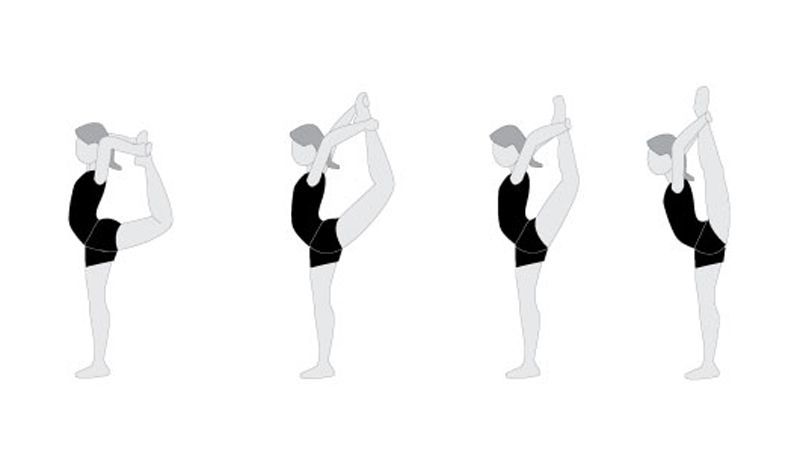 Paired with a neat and experienced dancer, this will not bother you. But somewhere around 70% of the partners are those who shake the plate with varying degrees of force (Moscow statistics)) . The harder the dribble, the more furiously partner dribbles , the more you are swayed.
Paired with a neat and experienced dancer, this will not bother you. But somewhere around 70% of the partners are those who shake the plate with varying degrees of force (Moscow statistics)) . The harder the dribble, the more furiously partner dribbles , the more you are swayed.
Accordingly, in order not to be sausage, you must not be jelly and form a sufficiently elastic structure from your body. It has nothing to do with tightness and "woodenness" in the body. Let me explain the difference right away. Balance control, stability - this is the opening of the body, the direction "from the center", in particular - upwards. It's a feeling of elasticity. And tightness and "woodenness" is a closure, a direction "towards the center", towards oneself, the desire to make oneself smaller. Hands are glued to the body, shoulders rise to the ears, the back hunches as if in a desire to cover the chest from the energy of the partner. So it is not necessary.
Joints provide mobility of the body.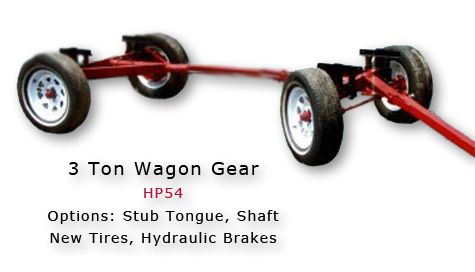 Thanks to them, you can move, walk, dance. And because of them, your balance can become loose if they are too mobile.
Thanks to them, you can move, walk, dance. And because of them, your balance can become loose if they are too mobile.
The mobility of the joints is regulated by the muscles that adjoin them. To be honest, I hadn't thought about it before. Muscles can fix the joint in a certain position and limit its mobility. Now you only need to understand what and how to fix, and learn how to do it.
1. Back
The importance of the back in the dance in general and in maintaining balance - in particular - cannot be overestimated. The spine supports your body and has a huge impact on stability. If this complex long structure staggers and collapses in some part of it, then the balance will constantly walk. Just imagine.
Zouk often uses thoracic slopes. For such a design to be stable, you need a strong straight (!) Loin. This is the rod that holds the center and coincides with the vertical axis.
An even, stable position of the spine is held by many muscles.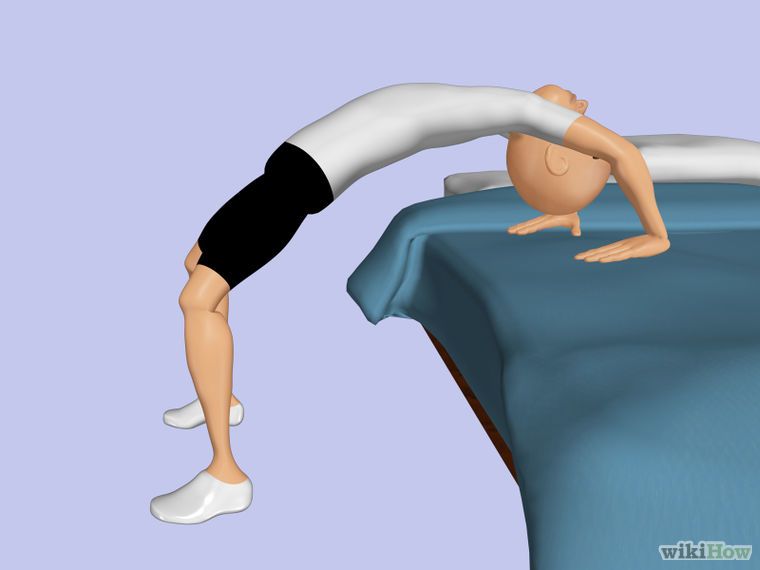 You will not be able to keep balance with your back if you pumped up only one muscle and forgot about others. You can do a hundred "boats" every day, and this will not give anything if the longest muscles of the back and the internal oblique muscles of the abdomen are not in good shape, for example. No wonder there is the concept of "muscle corset". The entire muscular corset must be harmoniously developed, and then everything will start to work out.
You will not be able to keep balance with your back if you pumped up only one muscle and forgot about others. You can do a hundred "boats" every day, and this will not give anything if the longest muscles of the back and the internal oblique muscles of the abdomen are not in good shape, for example. No wonder there is the concept of "muscle corset". The entire muscular corset must be harmoniously developed, and then everything will start to work out.
What happens in practice (we study the picture below) :
The entire press is pulled up ( The transverse abdominal muscles ) and Spit muscles of the abdomen , and the longest back muscles are pulled up upwards. These are the muscles that you can consciously control and physically feel their work in the dance.
When you need to resist strong pressure from the side and protect your lower back from unnecessary deflection, the press is collected more strongly, and quadratus lumborum . She helps girls save their backs from uncomfortable, dangerous cambras and from too strong an amplitude when it is not needed. For guys, this is a guarantee of safe performance of cambrai (especially if the partner collapses) and high-quality performance of "balao". During the "balao" the partner should not hang over the girl with his bodies, but on the contrary, he should be a stable support that does not bend anywhere.
She helps girls save their backs from uncomfortable, dangerous cambras and from too strong an amplitude when it is not needed. For guys, this is a guarantee of safe performance of cambrai (especially if the partner collapses) and high-quality performance of "balao". During the "balao" the partner should not hang over the girl with his bodies, but on the contrary, he should be a stable support that does not bend anywhere.
The longissimus dorsi is probably the hardest muscle to master, but once you find it, you will feel euphoric at how much easier it has become for you to dance. And especially rotate ;)
How to achieve it all:
Attend individual classes with a teacher who will select a set of strengthening exercises for you and monitor their correct execution. To begin with, you need someone who is familiar with the anatomy and physiology of movement, who understands how to competently develop the necessary muscles. In the case of the back, you will not be able to strengthen it by intuitively doing boats and tilts at home.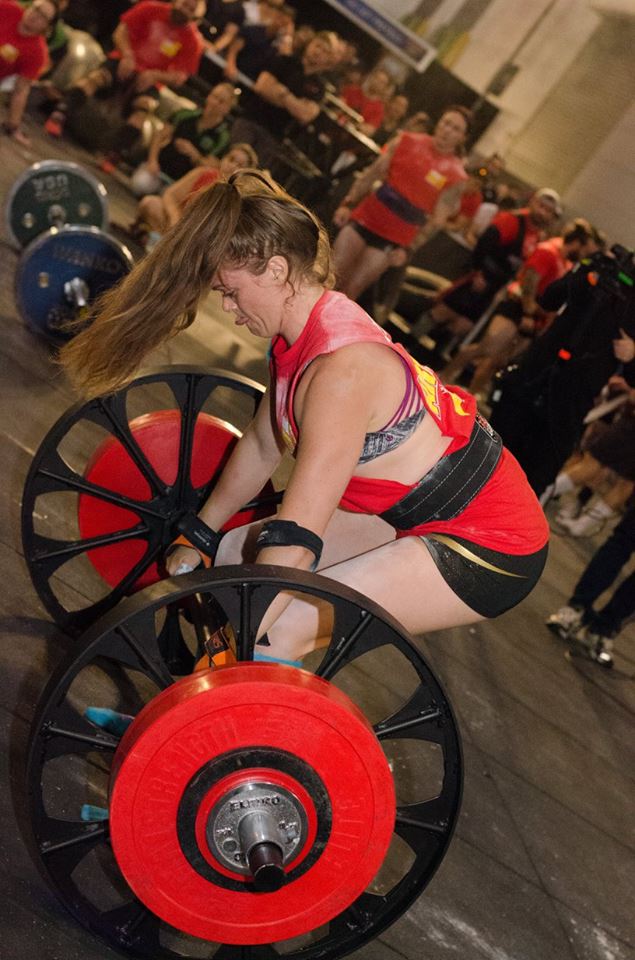 When you find the right muscles in yourself and feel how they should work, then it will be easier to follow them.
When you find the right muscles in yourself and feel how they should work, then it will be easier to follow them.
As I wrote earlier, I found the right muscles in myself when I went to the ballet and started doing exercises there without support (the barre had no effect). When you try to stand in a wildly uncomfortable position on one leg, and at the same time make some other movements in the air with the other, the body gradually begins to pull itself up, because it’s really easier to stand that way. I can’t forget my surprise at the new feeling of fatigue in my back, because nothing worked there before, despite 2 years of zouk.
2011 / 2016. It's a pity that in the first photo the topic covers the skin, the lower back is not visible. Except in the lower back, the back did not bend anywhere else. The body was like a sack of potatoes: where it was tilted, it fell all over there.
2. Hips and Legs
I would say that the back is the dancer's top drive and the hips are the bottom drive. Both are equally important and significant for balance. A four-wheel drive dancer can control both his back and his hips equally. But learning to regulate the dance with the hips is easier and faster.
Both are equally important and significant for balance. A four-wheel drive dancer can control both his back and his hips equally. But learning to regulate the dance with the hips is easier and faster.
Due to their structure, the hip joints are highly mobile. This allows us to make many beautiful movements, sit on the splits, swing our legs, etc. But this same mobility is also a common cause of loss of balance. Any movement of the hips shifts your center of gravity forward, backward, left or right. If the center of gravity shifts within the feet, then everything is fine, but as soon as the amplitude of movement turned out to be slightly larger and the center of gravity went beyond the foot, you skidded.
Muscles of the thighs regulate joint mobility, stride length, tension in the legs. The point is that your hips should move only when you need to, only in the right direction and only with the necessary amplitude. Most often I use the thigh muscles when I need to keep the center in one point - rotations, "onda" in place, shifting the frame, counterbalances, etc.
What happens in practice:
On the diagram you can see that there are as many different muscles here as in the back. Therefore, the formula "pull in the ass" is actually not very correct. This will come down for a beginner level, so as not to overload the brain with unnecessary information. Yes, and the ass, too, can be retracted in different ways.
First of all, naturally, the gluteus maximus is tense . Try to move your hips with a tense booty or take a step. You can't make an amplitude movement, right? The center of gravity cannot go beyond the foot. Great, the effect is already there. If all the information is new to you, and the body is not accustomed to working, concentrate only on this for a start.
In addition to the gluteus maximus, the gluteus medius and minimus are also tense if they are in good shape. I found them already on Jazz Modern, they raise the leg to the side in a non-reversible position. If they connect, it adds even more stability.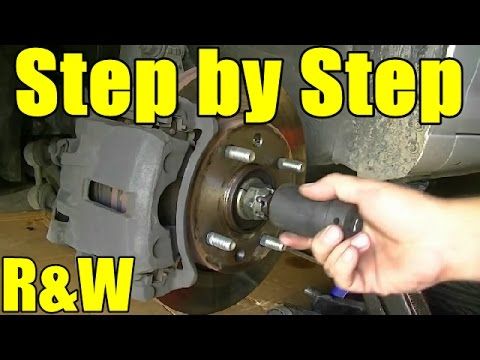
At the same time, if you stand upright, the pelvis does not turn forward. "Clamping a coin in the pope" is the wrong wording, and it is not necessary to feed the pelvis forward for stability. This position is good and useful in movements that require arching under the shoulder blades and when playing cambrai to reduce the load on the lower back. In other cases, this provision is not very effective. It is unaesthetic and blocks the work of other muscles that are useful for balance.
It is also very important to say here about a strong reduction of the legs to the center. All the crosses in the legs and just legs placed close together, if you try to bring them together, as if to squeeze something between them (the same coin), they give excellent fixation and stability! At the same time, long adductor muscles will work in the cross. If you put your legs together in parallel (non-reversible), the thin muscle of the thigh starts to work , and if you turn it out (socks to the sides) - adductor magnus . It is convenient for me to turn my feet a little for stability, because the large adductor muscle is better pumped and holds well, and even in the eversion position, the knees do not press against each other.
It is convenient for me to turn my feet a little for stability, because the large adductor muscle is better pumped and holds well, and even in the eversion position, the knees do not press against each other.
And another cool trick that I only recently realized at the ballet and noticed that it automatically appeared in the zouk as well. It helps a lot to keep tension in the uppermost part of the semitendinosus and biceps femoris muscles (look in the central picture) , at the junction with the gluteus maximus. This is the place under the booty where women traditionally get cellulite;) If you try to pull the butt up a little without bending at the same time in the lower back (!), then tension appears in this place. When the muscles there become strong enough, they also help to maintain balance, even standing on one leg. But if you move the pelvis forward, then this just won’t work. But it is rather a tool for an already pumped carcass.
Knee extension is also a useful tool. First, the knee-in leg is more stable than the relaxed leg. Secondly, it's just beautiful.
Plie (squat) as opposed to stretching the knees, also helps to keep the balance. If you perform movements in a small plié, other muscles work. Plie allows you to remove part of the load on the back if the partner strongly bends / collapses (the impulse will fall above the waist, and it’s easier to group this way). And also it is an indispensable help when the partner is shorter and often leads under his arm. Plie will help to keep balance if the muscles of the legs and priests are tightened at the same time. That is, this is not a humpty-dumpty on bending legs, but a fixed stable position.
3. The rest
What else affects the balance? These are all the joints that connect you to the ground and that conduct impulses in pairs.
Stop!
Perhaps this is the part of the body that has been underestimated by the social dancer for a very long time.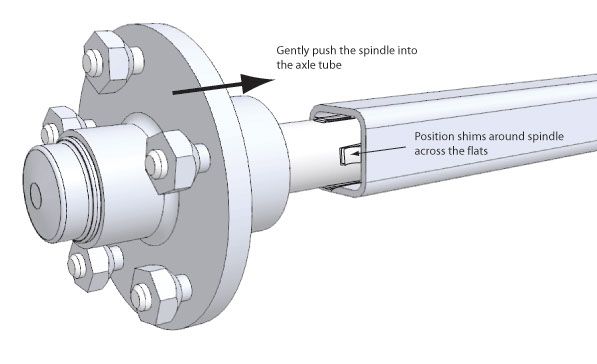 And in vain. Feet affect balance, even if everything is fine with the back and hips. If the muscles of the feet are weak, not used to the load, then the feet periodically fall on the outer / inner rib or wrap inward and make your position more precarious. Blockages are especially bad in heels, as it increases the risk of injury.
And in vain. Feet affect balance, even if everything is fine with the back and hips. If the muscles of the feet are weak, not used to the load, then the feet periodically fall on the outer / inner rib or wrap inward and make your position more precarious. Blockages are especially bad in heels, as it increases the risk of injury.
How to strengthen, you will find a lot of information on the Internet. Rolling a rolling pin, pulling up a napkin, and ballet exercises will do. The main thing is that the dance should not be like this:
(this is me again, but I know for sure that many girls have similar photos)
Shoulders
Shoulders affect personal balance if you perform movements with an emphasis on the arm or shoulder (contemporary, breakdancing, hip-hop, yoga, etc.). Then the shoulder joint, in order to avoid injuries, should be well fixed, that is, strongly lowered down.
In pair dancing, the shoulders must also be in good shape to effectively transmit impulses and maintain balance.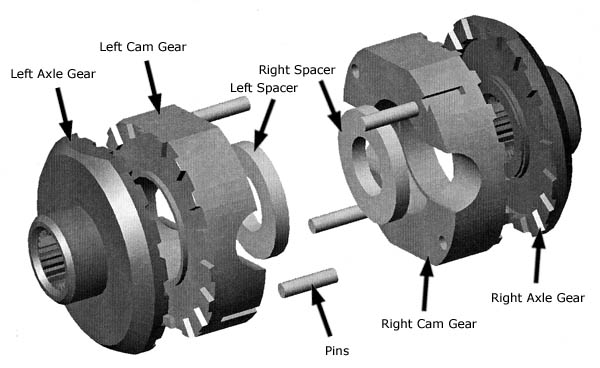 Shoulders are a mandatory part of FRAME . I will write about the frame next time as an important element of balance in a pair.
Shoulders are a mandatory part of FRAME . I will write about the frame next time as an important element of balance in a pair.
Hands, fingers
Also important. They should not break in or out when supported and framed.
CONCLUSION
- Good balance is the result of complex work with the muscles of your body, a good sense of space, center of gravity and partner.
- To develop balance, it is not enough just to dance social dances, this is too weak a load. To some extent, it will develop without additional training, but it will only be 10-15% of your potential. To reach a new level, you will have to leave your comfort zone and add more difficult situations to your body.
- You don't have to be a professional dancer to learn how to balance well. Age, level, degree of clumsiness and woodenness do not matter. But desire and perseverance - yes, they have.
To be continued! Next time - reasons for losing balance in a pair, distance, frame and simple ways to correct errors with balance.
You can follow the announcements of new articles through the group in VK: https://vk.com/zoukability
Classical dance, ballet , contributing to the development of muscles, ligaments, the development of coordination of movements in the dancer. Exercises are performed at the “machine” (attached to the wall with brackets) and in the middle of the training hall daily. The exercise consists of the same elements.
Adagio A part of the dance performed slowly to calm music. The concept is used not only in the sense of music, but also:
A separate dance, or part of a musical and choreographic performance, which are performed by one, two or more soloists. The most common adagio is performed by a duet;
For exercise - exercises at the choreographic barre or in the center of the hall, which consist of a set of poses and exercises, turning elements, tilts in a calm rhythm. The task of the adagio is to develop stability, expressiveness, musicality, harmony and smooth transitions from one movement to another.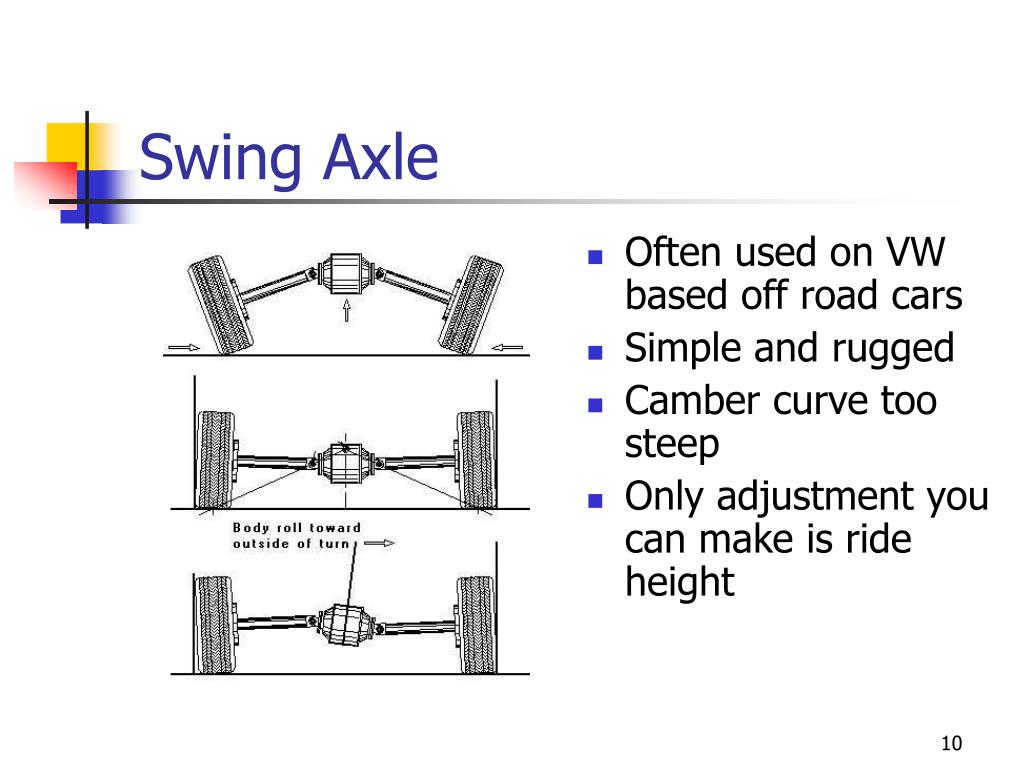
Includes grand plie, develope, revelant, all kinds of balances, pirouettes, turns. A fused bundle for 32, 64 accounts.
Allegro (allegro in Italian means soon, dexterously, quickly) is a set of exercises in the center of the gym, which consists of jumps of different heights and speeds.
ARABESQUE [arabesque] - a classical dance pose in which the leg is retracted "toe to the floor" at 45 °, 60 ° or 90 °, the position of the torso, arms and head depends on the shape of the arabesque. one of the basic movements in classical choreography. The position of the allongee hands, the gaze rushes into the distance, which gives the pose grace and expressiveness. The arabesque symbolizes an elusive dream; it is the leitmotif of Giselle or the Sylph, popular romantic heroines. During the exercise, the supporting leg can fully stand on the foot, half-toes / fingers, be extended or bent at the knee. Sometimes it is performed with an emphasis on the knee and the removal of the second leg.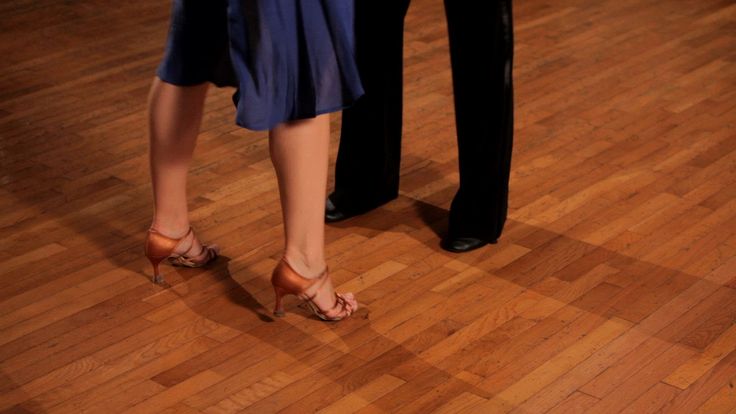 If the pose is performed in a jump, then the position of the leg may be different (strictly perpendicular to the floor, throwing forward, etc.). The Russian ballet school divides the arabesque into four types. The first two are open (arabesque effacee), the third and fourth are closed (arabesque croisee). The old ballet school singled out another fifth type of arabesque, in which the body leaned over and the arms were raised forward allongee. Arabesque penchee - a pose in which the body leans forward so that the working leg can rise as high as possible. I,II,III,IV Arabesques.
If the pose is performed in a jump, then the position of the leg may be different (strictly perpendicular to the floor, throwing forward, etc.). The Russian ballet school divides the arabesque into four types. The first two are open (arabesque effacee), the third and fourth are closed (arabesque croisee). The old ballet school singled out another fifth type of arabesque, in which the body leaned over and the arms were raised forward allongee. Arabesque penchee - a pose in which the body leans forward so that the working leg can rise as high as possible. I,II,III,IV Arabesques.
ASSEMBLE [aseamble] - a jump from one leg to two is performed with the legs moving in a given direction and picking up the legs during the jump together. When performing this movement, the working leg can open in any direction with the toe on the floor or in the air, while the dancer simultaneously squats on the supporting leg. Then the working leg is placed in the 5th position on the fingers or half-toes. The movement ends in a demi-plie. If the figure is performed in a jump, then the legs are collected at the time of flight. The execution of the jump can be varied: on the spot (leg throw to a small height, small jump petit pas assemble), or with advancement (strong leg throw at 70-90 degrees, extremely high takeoff grand pas assemble). In the first case, the movement begins with a jump and a throw of the leg from the 5th position. A grand pas assemble always requires an approach to achieve maximum jump height. To maintain balance, the arms are caught up in position and help the jump. Additional complications in the form of skids or double turns can give the movement spectacle and virtuosity. The main difference between pas double assemble (performed on fingers or half-toes on a small jump) is that the figure is performed twice from the same foot. If the position is executed to the side, the change of legs to the 5th position is performed at the moment of the second movement.
The movement ends in a demi-plie. If the figure is performed in a jump, then the legs are collected at the time of flight. The execution of the jump can be varied: on the spot (leg throw to a small height, small jump petit pas assemble), or with advancement (strong leg throw at 70-90 degrees, extremely high takeoff grand pas assemble). In the first case, the movement begins with a jump and a throw of the leg from the 5th position. A grand pas assemble always requires an approach to achieve maximum jump height. To maintain balance, the arms are caught up in position and help the jump. Additional complications in the form of skids or double turns can give the movement spectacle and virtuosity. The main difference between pas double assemble (performed on fingers or half-toes on a small jump) is that the figure is performed twice from the same foot. If the position is executed to the side, the change of legs to the 5th position is performed at the moment of the second movement.
ATTITUDE [attitude] - the position of the leg off the floor and slightly bent at the knee.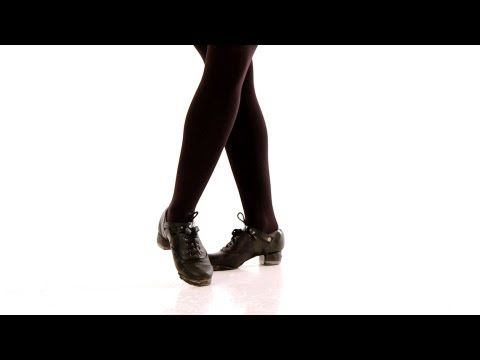 It is one of the main positions in classical choreography. During execution, the working leg bends at the knee and rises back to a height. The supporting leg can stand on the foot, fingers or half-toes, hands in the allondie position. The figure is the basis for a big jump. To perform it, like an arabesque, you need a strong and flexible back. If the attitude is performed forward, the bent leg is lifted forward, and the heel should be above the level of the knee. This is the leitmotif of proud heroines, such as Aurora (ballet "Sleeping Beauty"). In a broad sense, attitude is any posture that a dancer or dancer assumes.
It is one of the main positions in classical choreography. During execution, the working leg bends at the knee and rises back to a height. The supporting leg can stand on the foot, fingers or half-toes, hands in the allondie position. The figure is the basis for a big jump. To perform it, like an arabesque, you need a strong and flexible back. If the attitude is performed forward, the bent leg is lifted forward, and the heel should be above the level of the knee. This is the leitmotif of proud heroines, such as Aurora (ballet "Sleeping Beauty"). In a broad sense, attitude is any posture that a dancer or dancer assumes.
A LA SECONDE [a la segond] - a position in which the performer is located en face, and the "working" leg is open to the side by 90 °.
ALLONGE, ARRONDIE [alonge, arondi] - the position of a rounded or elongated arm. "Reaching", the final movement of the arm, leg, torso.
Aplomb [aplomb] - (balance) - the dancer's ability to stand in one position or another on one leg for a long time.
Balance [balance] - Swing, sway. Swinging motion.
Pas ballonne [pa ballonne] - Inflate, inflate. The dance is characterized by advancement at the moment of jumping in various directions and poses, as well as legs strongly extended in the air until the moment of landing and bending one leg on sur le coude pied.
Pas ballotte [pa ballotte] - To hesitate. A movement in which the legs at the moment of the jump are extended forward and backward, passing through the central point. The body leans back and forth, as if hesitating.
balance - "swaying", pendulum movement of the legs forward up - back down, forward - back, forward - back up
Balancoire [balancer] - Swing. Used in grand battement jete.
Batterie [batry] - Drum beat. The leg in the position sur le coude pied makes a series of small shock movements.
Pas de bourree [pas de bourree] - Chased dance step, stepping over with little advance.
Brise [breeze] - Break, crush. Movement from the section of jumps with skids.
Pas de basque [pas de basque] - Basque step. This movement is characterized by a score of ¾ or 6/8, i.e. triplex. Runs forward and backward.
Battement [batman] - Span, beat.
Battement tendu [batman tandu] - Abduction and adduction of the outstretched leg, extension of the leg. "Elongated" sliding movement of the foot in the position of the foot on the toe forward, to the side, back with the return of the sliding movement to the IP.
B attement tendu jeté - (batman tandyu zhete) - “throw”, swing to the downward position (25 °, 45 °) with a cross
Battement fondu [batman fondue] - Soft, smooth, “melting” movement. A movement consisting of simultaneous bending of the knees, at the end of which the "working" leg comes to the position sur le cou-de-pied in front of or behind the skating leg, and then follows the simultaneous extension of the knees and the "working" leg opens forward, sideways or back.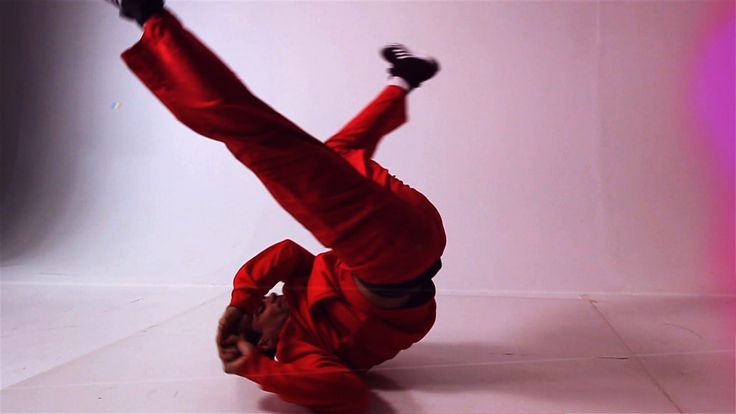 In modern jazz dance, the fondu form from the folk stage dance lesson is also used.
In modern jazz dance, the fondu form from the folk stage dance lesson is also used.
battement fondu - (batman fondue) - “soft”, “melting”, simultaneous flexion and extension of the legs in the hip and knee joints.
battement frappe - (batman frappe) - Striking movement, or striking movement. A movement consisting of rapid, vigorous flexion and extension of the leg, the foot being brought into sur le cou-de-pied position at the moment of flexion and opening toe to the floor or 45° high at the moment of extension forward, sideways or backward. Frappe [frappe] - Beat.
Battement double frappe
Battement developpe [batman devloppe] - Swing, open, take out the leg 90 degrees in the desired direction, pose. Taking out the leg forward, backward or to the side by sliding the "working" leg along the supporting one.
BATTEMENT AVELOPPE [batman avloppe] - the opposite battement developpe movement, the "working" leg from the open position through the passe is lowered to the specified position.
Battement soutenu [battman soutenu] - Sustain, maintain, pull up the legs in the fifth position, continuous movement.
BATTEMENT RELEVELENT [batman relevelyan] - smooth lifting of the leg through sliding along the floor 90 ° forward, sideways or backwards.
1 When learning the vocabulary, it must be remembered that the movements of classical dance, borrowed by modern jazz dance, are very often modified. This is especially true of the eversion and parallel position. In this regard, the terminology of classical ballet is given in the dictionary without changes (see All about ballet//S left by E.Ya. Surits. M., 1966, Encyclopedia "Ballet". M., 1981, etc.), and the change in the provisions depends on the context of the lesson. There is often terminological overlap between English and French terminology, for example, temps leve is the same as hop, battement tendu is like brack, kick is like grand battement developpe, etc. In this case, it is necessary to use the movement depending on the specific exercise.
In this case, it is necessary to use the movement depending on the specific exercise.
BATTEMENTRETIRE [batman retire] - transfer through the sliding of the "working" leg, through the passe from the V position in front to the V position behind.
petit battement - (petit battman) - “little blow” - alternately small, short foot strikes in the cou de pied position in front and behind the supporting leg.
grand battement - (grand batman) - “big throw, swing” 90 ° and above through the position of the foot on the toe.
battu- (botyu) - “beat” continuously, small, short blows to the ankle joint only in front or behind the supporting leg.
Cabriole [cabriole] - Jump with knocking one leg over the other.
Chain [shen] - Chain.
Changement de pieds
Changement [shazhman] - Change.
Pas chasse [pa chasse] - Drive, adjust. Ground jump with advance, during which one leg knocks out the other.
Ground jump with advance, during which one leg knocks out the other.
Pas de chat [pas de sha] - Cat's step. This jump is similar in character to the gentle movement of a cat's jump, which is emphasized by the curve of the body and the gentle movement of the arms.
Le chat [le sha] - Cat.
Pas ciseaux [pas ciseaux] - Scissors. The name of this jump comes from the nature of the movement of the legs, thrown forward in turn and extended in the air.
Coupe [coupe] — Jerky. Knocking out. Jerky movement, short push.
Pas couru [on smoking] - Running through the sixth position.
Croisee [krause] - Crossing. A pose in which the legs are crossed, one leg covers the other.
Degagee [degagee] - Release, take away. “Transition” from the stance to the left right forward to the toe, step forward through the semi-squat in IV position, straightening up, stance to the right, left back, to the toe.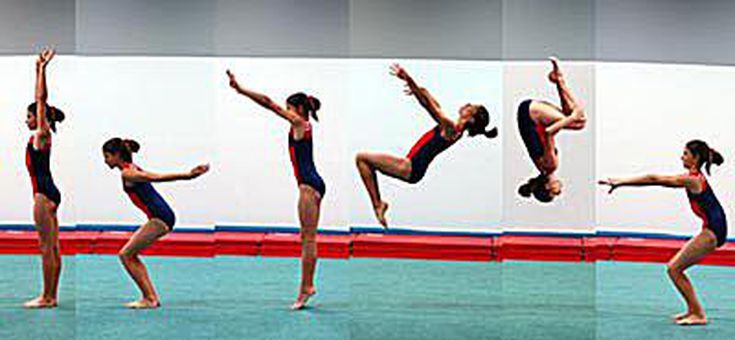 From the stand on the left, right to the side on the toe, step to the side through the semi-squat in II position, stand on the right, left to the side on the toe.
From the stand on the left, right to the side on the toe, step to the side through the semi-squat in II position, stand on the right, left to the side on the toe.
Developpee [devloppe] - Taking out. “Opening”, “deployed”, from the stoic to the left, right with a sliding movement to a bent position (toe at the knee) and its extension in any direction (forward, side, back) or higher.
Dessus-dessous [desu-desu] - Top and bottom, above and below. Pas de bourre view.
double - (double) - “double”, • battement tendu - double heel pressure • battement fondu - double semi-squat • battement frapper - double blow.
Ecartee [ekarte] - Take away, push apart. A pose in which the entire figure is turned diagonally.
- a pose that builds from the epaulement in 5th position with one of the legs abducted to the side. At this time, the body deviates from the waist to the supporting leg.
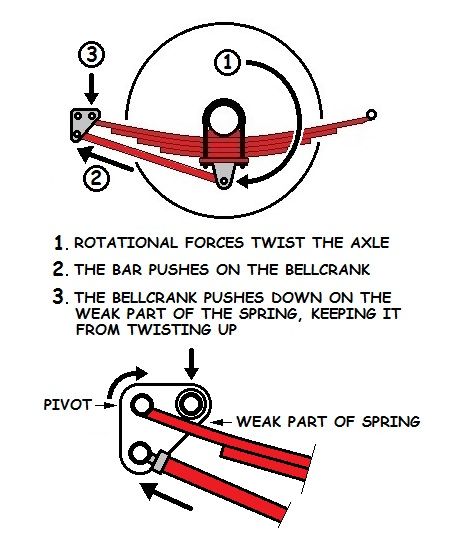 Small ecartee poses are performed with the toe extended to the floor, medium poses with 45 degrees of leg elevation, and large 90o and above. The supporting leg is on a full foot, toes / half toes, the knee is fully stretched, or in a demi-plie position. The working leg is extended at the knee, the foot is stretched. The movement can be performed in a jump, the position of the hands is any. The ecartee pose has two types:
Small ecartee poses are performed with the toe extended to the floor, medium poses with 45 degrees of leg elevation, and large 90o and above. The supporting leg is on a full foot, toes / half toes, the knee is fully stretched, or in a demi-plie position. The working leg is extended at the knee, the foot is stretched. The movement can be performed in a jump, the position of the hands is any. The ecartee pose has two types: - Ecartee forward. The working leg is open diagonally forward in 2 positions, that is, towards the viewer. At this time, the head is turned in the same direction, raised, the gaze rushes upward;
- Ecartee back. The working leg is open back diagonally in 2 positions, away from the viewer. The head turns to the supporting leg, and the gaze rushes down.
Effacee [eface] - Expanded position of the body and legs. A pose that builds from the epaulement efface in 5th position with the legs moving forward or backward. Small effacee poses are performed with the toe extended to the floor, medium poses at a height of 45 degrees, large poses 90 degrees and above. The position of the supporting leg on the full foot, toes / semi-toes, stretched at the knee, or in demi-plie. The working leg can be straight or bent at the knee. It is performed in the air, or on a jump. The position of the hands and head can change endlessly, varying the changes in posture.
Small effacee poses are performed with the toe extended to the floor, medium poses at a height of 45 degrees, large poses 90 degrees and above. The position of the supporting leg on the full foot, toes / semi-toes, stretched at the knee, or in demi-plie. The working leg can be straight or bent at the knee. It is performed in the air, or on a jump. The position of the hands and head can change endlessly, varying the changes in posture.
Epaulement (from epaule - shoulder) - a position during which the dancer becomes half-turned to the mirror, or to the viewer. Feet, hips and thighs are turned to the right or to the left side of the viewer by 45o or 135o. The head turns to the shoulder, which is directed forward. This position gives the dance three-dimensionality, makes it more expressive and artistic. When performing, the dancer must control the angle of the head, the position of the shoulders and the direction of the gaze.
- Epaulement croise (verb croiser - to cross) - a pose during which the legs are in any crossed position (3,4,5).
 The shoulder and leg of the same name are turned towards the viewer. The head turns towards the turned shoulder. This position allows you to take any posture through the open leg;
The shoulder and leg of the same name are turned towards the viewer. The head turns towards the turned shoulder. This position allows you to take any posture through the open leg; - Epaulement efface (the verb effacer - to remove, hide) - a pose during which the legs are in any crossed position (3,4,5), but the leg opposite to the shoulder turned towards the viewer is in front. This position allows you to take any position effacee through the opening of the leg forward or backward.
Echappe [echappe] - Break out. Jump with legs opening to the second position and collecting from the second to the fifth.
Pas emboite [pa ambuate] - Insert, insert, stack. A jump during which there is a change of half-bent legs in the air.
Entrechat [entrechat] - Jump with a skid.
En dehors [an deor] - Out, from the circle. Circular movement away from you, circular movement outward at the hip or knee joint, as well as turns.
En dedans [an dedan] - Inside, in a circle. Circular motion towards yourself, circular motion inward.
En face [en face] - Straight, straight position of the body, head and legs.
En tournant [an turnan] - Rotate, turn the body while moving.
Fouette [fuete] - Whip, flog. A kind of dance turn, fast, sharp. The open leg bends towards the supporting leg during the turn and opens again with a sharp movement.
This movement has several variations:
- Fouette en tournant at 45° En dehors. At the moment when the left leg is in demi-plie, the right leg is opened in 2 positions by 45 degrees, tout en dehors on the left leg. At the moment of execution, the working leg touches the supporting leg on the calf. The hands at this time are in the preparatory, or first position. The stop is performed on a demi-plie, arms and legs open in 2 positions. The movement begins with the right foot, while the supporting one does not collapse.
 If Fouette is performed several times in a row, it begins with preparation in 4 positions, rising to pointe shoes, performing tour en dehors;
If Fouette is performed several times in a row, it begins with preparation in 4 positions, rising to pointe shoes, performing tour en dehors; - Fouette en tournant for 45° En dedans performed in the same way, but the working leg first goes in front of the calf and then back. The exercise is mandatory in the tutorial, but rarely seen on stage;
The French ballet school is similar to the Russian one. Movements: les fouettesen dedans et endehors, les fouettes sautes, les fouettes sur pointes ou demi-pointes. The dancer performs a pique on the right leg. At this time, the left one rises forward, the dancer performs a tour on her finger (surlapointe) or half-finger (demi-pointe), and the left one remains extended in the air. The movement ends at en arabesque sur pointe (oudemi-pointe).
American Ballet School Fouette en tournant at 45° En dehors. In contrast to the Russian school, where the working leg during the tour touches the middle of the calf from behind, and then goes to the front of the calf of the left leg (petit Battement), in the American school the working leg performs a demi rond at 45 °. This gives the figure an additional force, but at the same time it can threaten to “release the hip” and the ballerina to leave the axis. Due to this execution, Fouette is performed with advancement to the side or forward.
This gives the figure an additional force, but at the same time it can threaten to “release the hip” and the ballerina to leave the axis. Due to this execution, Fouette is performed with advancement to the side or forward.
- Grand Fouette. He absorbed the teachings of the French and Italian schools;
- Les fouette sendehors. The croisee pose marks the back of the left leg. Coupe on the half-toes of the left leg, hands go to the second position, the left leg goes down to the demi-plie, and the left hand to the 1st position. At the moment when the dancer moves her half-bent right leg forward 90 degrees, she rises to the half-toes of her left, quickly circles the Grand rond de jambe with her right leg back and finishes on her left leg in demi-plie in III arabesque (in the en face position - facing the viewer ). Hands perform Port de bras: the left is raised to position 3 and passes to 2, while the right is transferred to 3 and passes through the right to III arabesque when lowering the left leg into a plie;
- Les fouette sendedanse tendedans - identical execution principle;
- Grand Fouette en tournanten dedans.
 The dancer stands in a croisee position forward with her left foot, descends into a demi-plie on her left foot, jumps on half-toes and throws her right foot into position 2 (alaseconde) at 90 ° (120 °) - Grand battement jete. During the turn, he swings his right leg through the passe parterre (passing position). At this moment, the supporting leg rotates on half-toes, and the right leg remains at the same height.
The dancer stands in a croisee position forward with her left foot, descends into a demi-plie on her left foot, jumps on half-toes and throws her right foot into position 2 (alaseconde) at 90 ° (120 °) - Grand battement jete. During the turn, he swings his right leg through the passe parterre (passing position). At this moment, the supporting leg rotates on half-toes, and the right leg remains at the same height. - Grand Fouette entournanten dedans. Or Italian fuete. It is performed on the fingers in the same way. The only difference is that the movement does not begin with plie, but with surlecou depied. Ends in attitude on pointe shoes. 3 position for the right hand and the first for the left.
- Grand Fouette en tournant saute execution is the same as Grand Fouette en tournan tendedans, only the left leg leaves the floor in a jump, the turn is performed in the air on a jump of the left leg.
Ferme Close.
Pas failli [pa fayi] - Hook, stop. Weakening movement. This movement is fleeting and often serves to prepare the springboard for the next jump. One leg seems to undercut the other. "Flying", IP - 5th position right in front. Push 2 jump up, dropping into a cross lunge left to the side, left hand up, right back - push left and swing right back down jump up 2 hands down.
Galloper [gallop] - Chase, chase, jump, race.
Glissade [glissade] - Slide, slide. A jump performed without lifting the toes off the floor.
Grand [large] - Large.
Jete entrelacee [jete entrelacee] - Flip jump.
Entrelacee [entrelace] - Bind.
Jete [jete] - Throw. Throw a leg in place or in a jump.
Jete ferme [jete ferme] - Closed jump.
Jete passé [jete passe] - Passing jump.
Lever - Raise.
Pas [pa] — Pitch. Movement or combination of movements. It is used as equivalent to the concept of "dance".
Movement or combination of movements. It is used as equivalent to the concept of "dance".
pounte - (pointe) - “on the toe”, “touching with the toe” from the stoic on the left, right forward, to the side or back on the toe swing in any direction with a return to the IP.
por de bras - (por de bra) - (Porter - wear, Bras - hand) - the correct transfer of hands to the main positions (1,2,3), rounded (Arrondi), elongated (Allonge) with a turn or tilt of the head, body. There are port de bras the first, second and third.
Pas d'achions [pas d'axion] - Effective dance. Pas de deux [pa de deux] - Dance of two performers, a classical duet, usually a dancer and a dancer. Pas de trois [pas de trois] - Dance of three performers, classical trio, usually two dancers and one dancer. Pas de quatre [pas de quatre] - Dance of four performers, classical quartet.
Passe [passe] - Conduct, pass. Connecting movement, holding or moving the leg, “pass”, “pass”, the position of the bent leg, the toe at the knee: in front, to the side, behind.
Connecting movement, holding or moving the leg, “pass”, “pass”, the position of the bent leg, the toe at the knee: in front, to the side, behind.
Petit [pet] - Small.
Petit battement [petit batman]
Pirouette [pirouette] - Yule, turntable. Fast rotation on the floor.
Plie [plie] - Squat. Demi-plie [demi plie] - Half squat. Grand plie - (grand plie) - deep, big "squat".
Pointe [pointe] - Sock, fingers.
Preparation [preparation] - Preparation, preparation.
Releve [releve] - Raise, elevate. Rise on fingers or on half-fingers. "Lifting", lifting to a rack on toes with lowering to the IP in any position of the legs. Releve, temps - a preparatory movement for performing tours and pirouettes. In its purest form, it is a preparation for rotations. Petit temps releve a la 2nd: working leg in surlecou-de-pied position, supporting leg in squat, hands in first position. The semi-bent working leg is brought to the side at a height of 45-60 degrees, while the supporting leg is leveled or stands on the toes/half toes. Hands open in 2 position. Temps releve endehors is performed from the surlecou-de-pied position in front, endans from the surlecou-de-pied position at the back. Grand temps releve a la 2nd - the same exercise, but the working leg is displayed for more than 90 degrees.
The semi-bent working leg is brought to the side at a height of 45-60 degrees, while the supporting leg is leveled or stands on the toes/half toes. Hands open in 2 position. Temps releve endehors is performed from the surlecou-de-pied position in front, endans from the surlecou-de-pied position at the back. Grand temps releve a la 2nd - the same exercise, but the working leg is displayed for more than 90 degrees.
Relevelent - Slow leg lift 90 degrees. “Raise” slowly, smoothly slowly at the expense of 1-4 1-8 raising the legs forward, sideways or back and higher.
Renverse [ranverse] - Overturn, turn over. Overturn the body in a strong bend and in a turn.
rond dejamb parterre - (rond de jamb par ter) - toe circle on the floor circular movement of the toe on the floor.
Rond [rond] - Circle. demi rond - (demi rond) - incomplete circle, semicircle (toe on the floor, on 45ana 90° and above).
Rond de jambe en l'air [ron de jambe en l'air] - leg circle in the air, standing on the left right to the side, circular movement of the lower leg out or in.
Soute [sote] - Jump in place in positions.
Simple [sample] - Simple, simple movement.
Sissonne [sison] - Does not have a direct translation. It means a type of jump, varied in form and often used.
Sissonne fermee [sison farm] - Closed jump.
Sissonne ouverte [sison overt] - Jump with leg opening.
Sissonne simple [sison sample] - A simple jump from two legs to one.
Sissonne tombee [sison tombee] - Jump with a fall.
Saut de basque [so de basque] - Basque jump. Jump from one foot to another with a turn of the body in the air.
Soutenu [sutenu] - Withstand, support, retract.
Sur le cou de pied [sur le cou de pied] - the position of the leg on the ankle (at the narrowest point of the leg), the position of the bent leg on the ankle joint in front or behind.
Temps lie [tan lie] - Bound in time. Connecting, smooth, continuous movement. Small adagio, 1-half squat on the left, 2 - right forward on the toe, 3 - shift the center of gravity to the right, left back on the toe, 4-IP 5. the same to the side and back.
Temps leve soutee [tang leve soutee] - Jumping in first, second or fifth position on the same foot.
tombée-(tombé) - “fall” from a toe stand in the fifth position lunge forward (to the side, back) with a return to the PI in a sliding motion.
Tire-bouchon [tire bouchon] - Twist, curl. In this movement, the raised leg is in a half-bent position forward. Pose with the position of the bent leg in front (attetyud in front) stoic on the left, right forward, shin down to the left.
Tour chainee Fast turns following one after another.
Tour en l'air [tour en leir] - Air turn, tour in the air.
Tour [tour] - Turn.